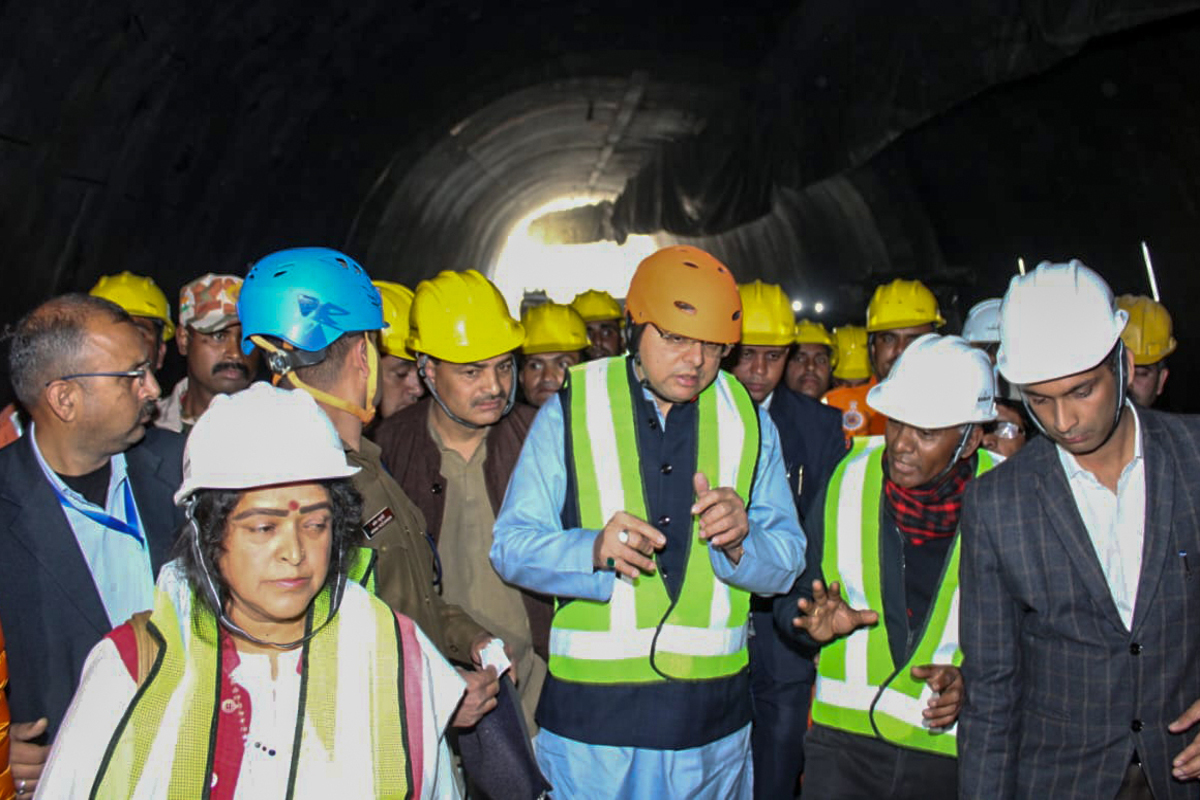The escape passage drilling work that had started late on Tuesday night to rescue 40 workers trapped in the collapsed tunnel on Yamunotri Highway was to be stopped midway at 3 am as rescue officials demanded a new machine.
Following this, the state government managed to get a high-power auger machine for placing MS steel pipes to make the escape passage through 60 meters of debris of the collapsed tunnel to rescue the workers trapped in it for more than three days.
Advertisement
Officials present on the ground at the Silkayara village site where the incident occurred informed The Statesman that parts of a new high-power horizontal drilling machine, to be assembled at the site are being flown from Delhi in the Indian Army’s helicopter Hercules. Both the parts of the heavy drilling machine arrived at the nearest airstrip Chinyalisaur but it will take 3-4 hours to reach the accident site.
It’s significant to note that the drilling work that was started with the help of a horizontal auger machine last night was stopped owing mainly to its slow pace. According to the district administration officials NHIdCL management, the new high penetration machine being brought from Delhi has a high speed of drilling with 4-5 meters per hour against the existing machine’s one meters per hour rate.
According to the rescue teams, the drilling work was aborted midway as it caused some technical problems. The auger machine being used was too slow. It failed to serve the purpose of creating an escape passage to reach the workers.
“Parts of the new high penetration machine have landed at Chinyalisaur Airstrip. These will soon be shifted to the tunnel site for assembling the machine in the next 3-4 hours. Once the machine is ready, rescue operations will be expedited soon,” said Arpan Yaduvanshi, Uttarkashi Superintendent of police.
Tunnel construction nodal agency NHIDCL director Anju Manish said experts and rescue teams have been working round-the-clock for the past three days to save the lives of trapped workers.
“Here rock is very fragile. The more we try to drill inside, the more debris gets deposited. We have already moved forward to insert 800 MM diameter steel pipes in the debris but there were some difficulties with it. The latest heavy drilling machine parts have been flown from Delhi with the help of three Indian Air Force Helicopters. The machine will be installed in the next 3-4 four hours and rescue work will be resumed” said Manish.
The NHIDCL director claimed that the “penetrating rate of the new machine is 4-5 meters per hour. We will be able to penetrate and place MS Steel pipes through 50 meters of debris in 10-12 hours at this pace. It’s difficult to give any definite time but we are trying to rescue the trapped worker as early as possible. The fragile nature of the rocks is causing problems in the rescue operation we had succeeded in drilling through 21 meters of debris on the first day it went in vain fresh debris fall subverted it”.
As many as 40 workers are trapped in the Yamunotri National Highway tunnel that collapsed at its Silkyara village end on November 12 early morning owing to a landslide. The under-construction 4.5-kilometer tunnel lying between Dharasu an Barkot suburbs is part of the Chardham all-weather road project in Uttarakhand funded by the central government.
Meanwhile, the trapped workers have started feeling sick and stressed. They have complained of fever, cough, cold, and restlessness with loss of confidence. Hearing about their sickness, a team of doctors was immediately brought in and workers were sent medicines in the packets along with prescriptions on how to take the tablets.











